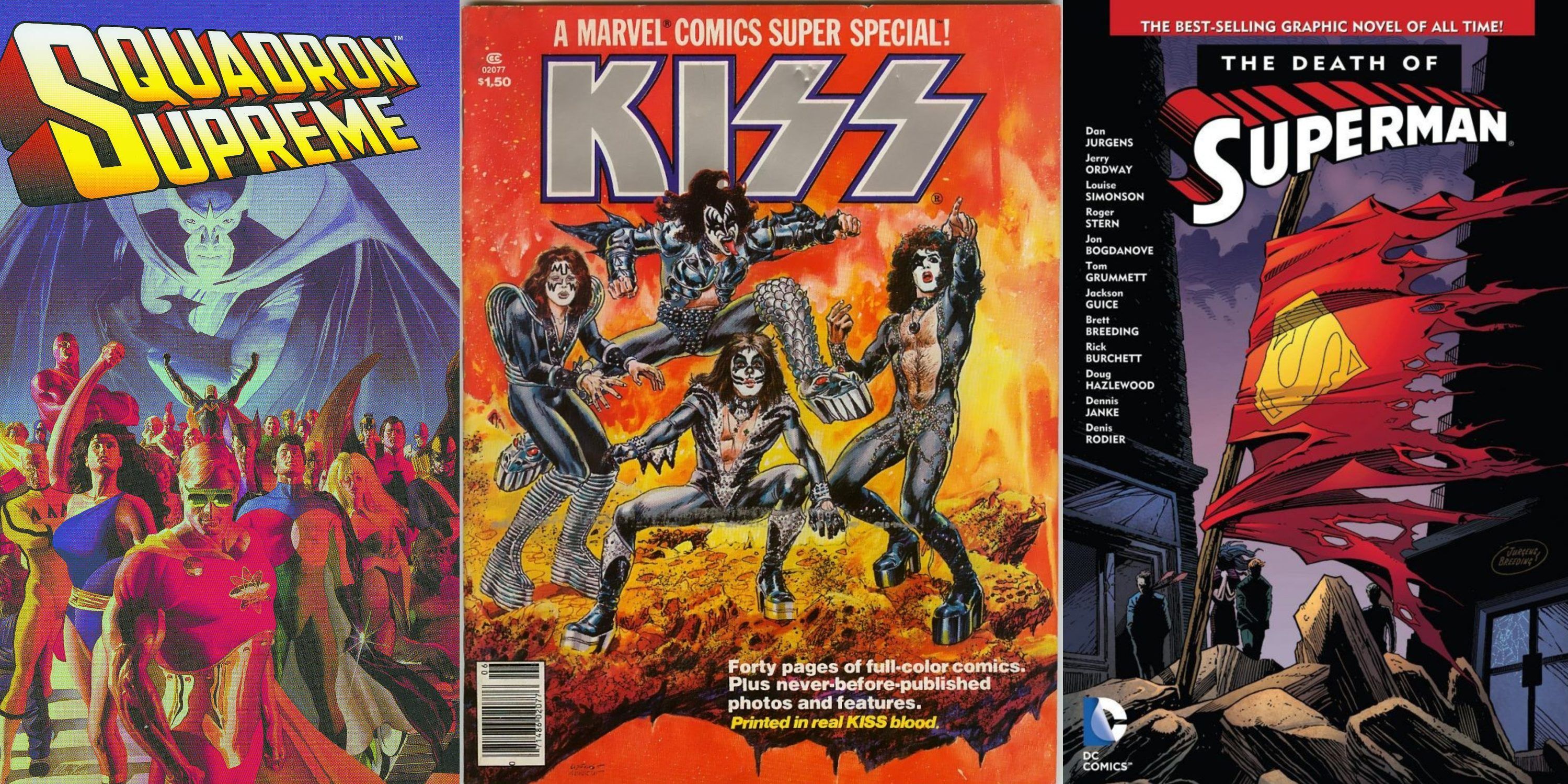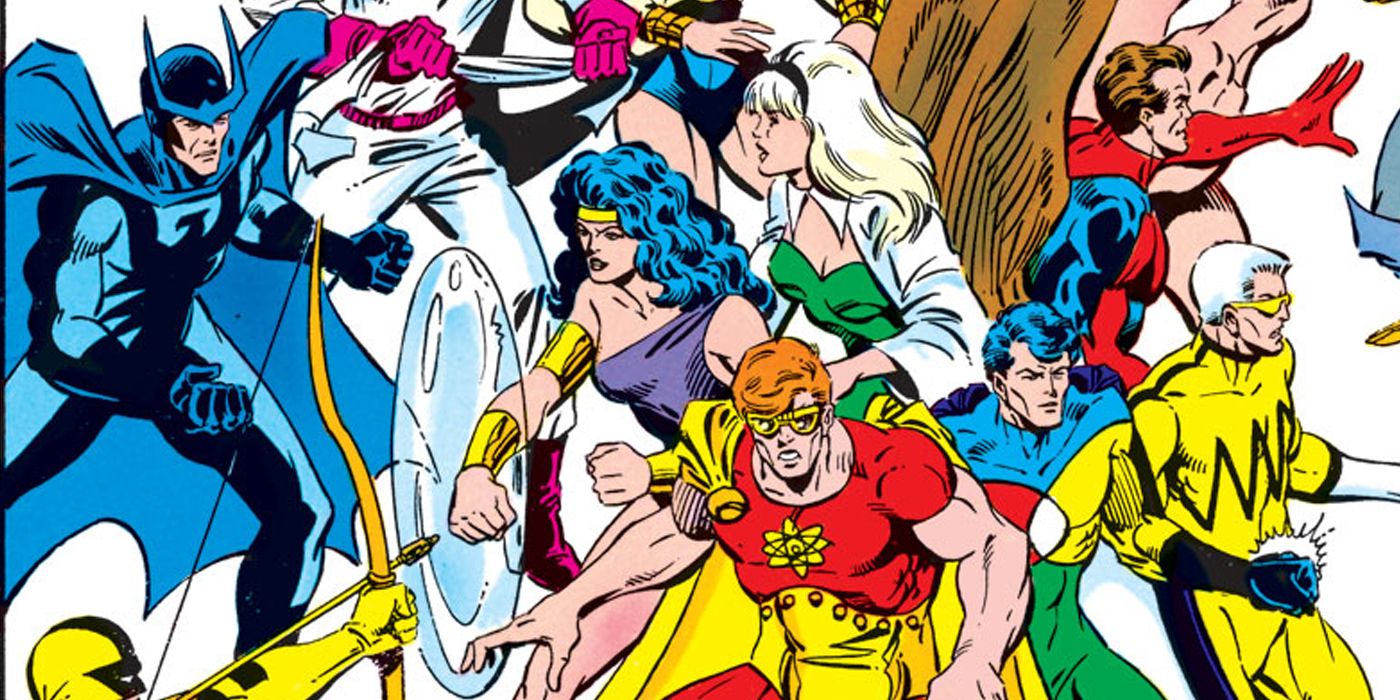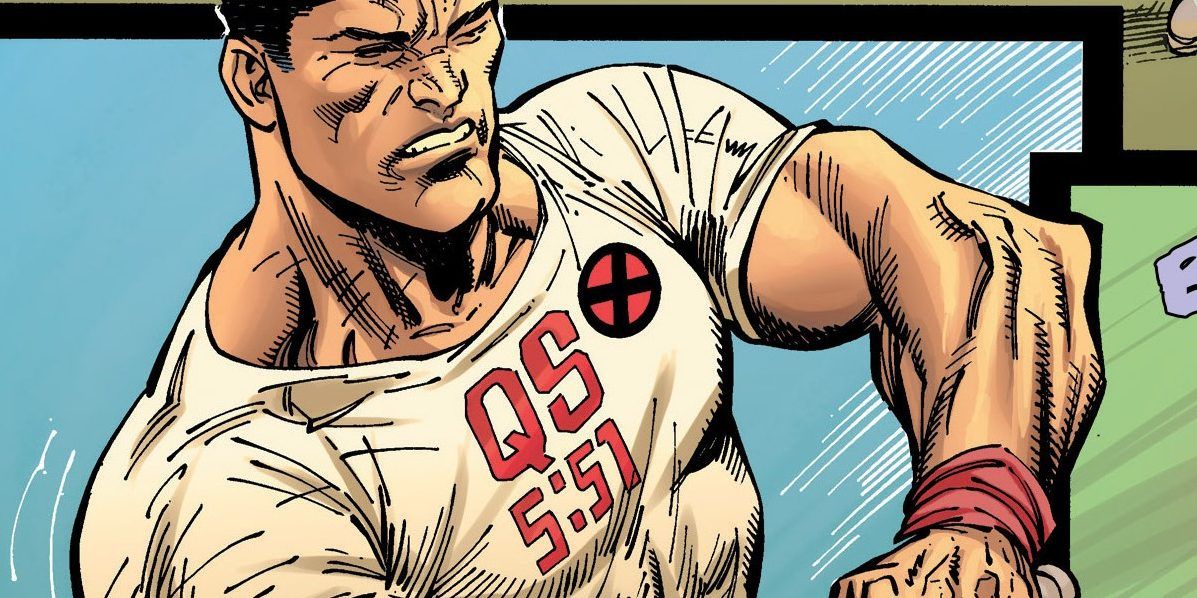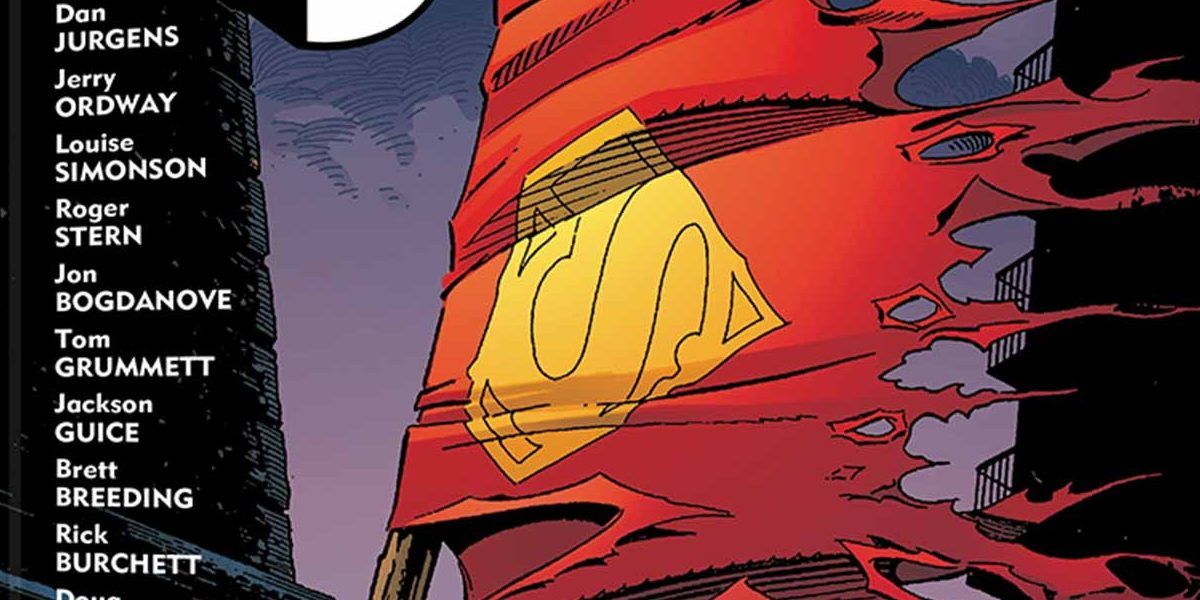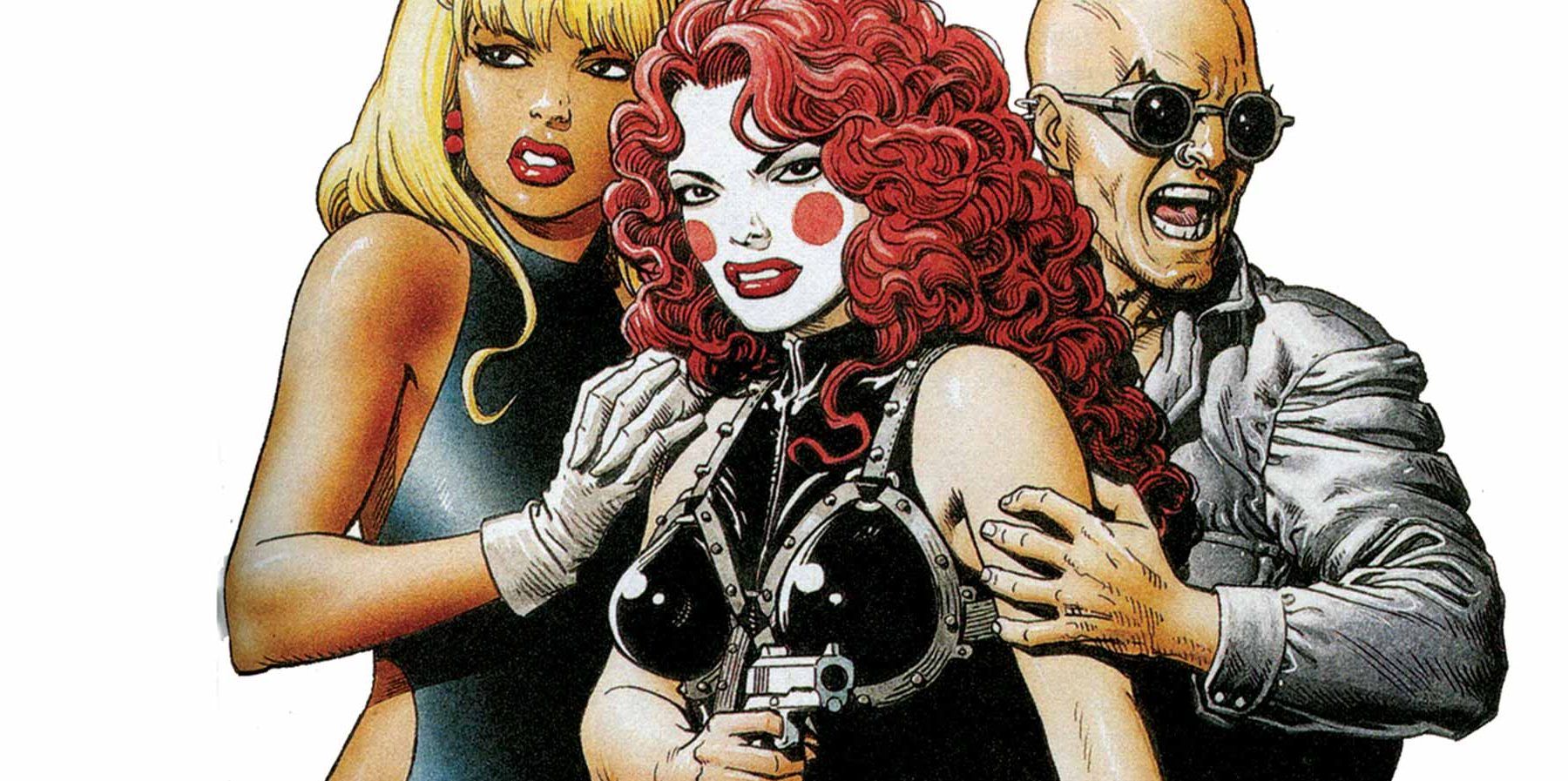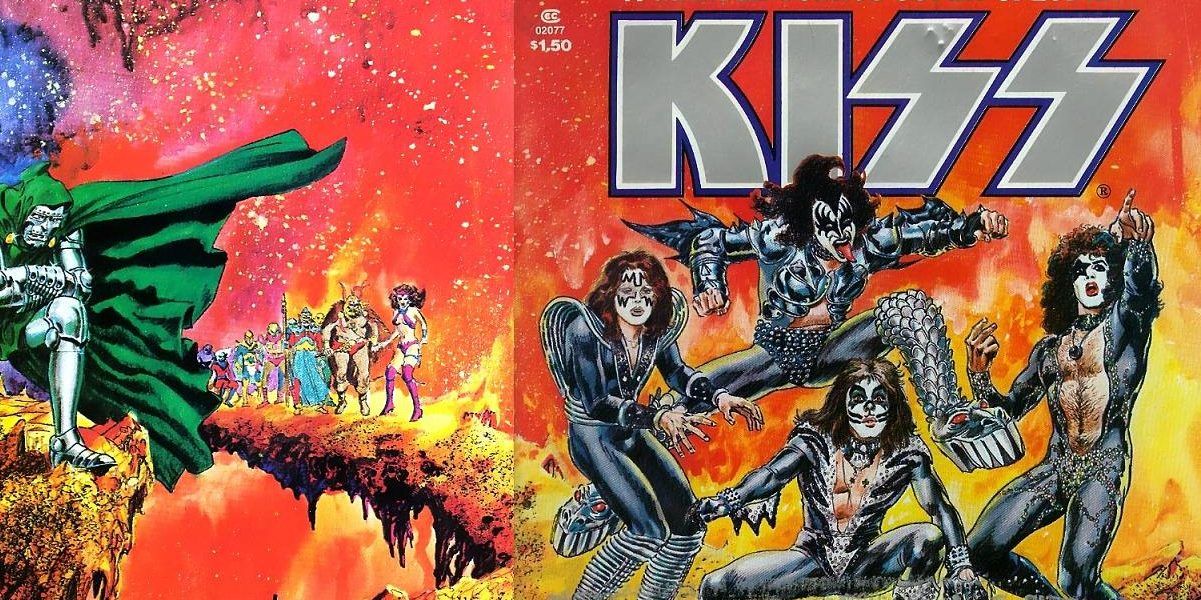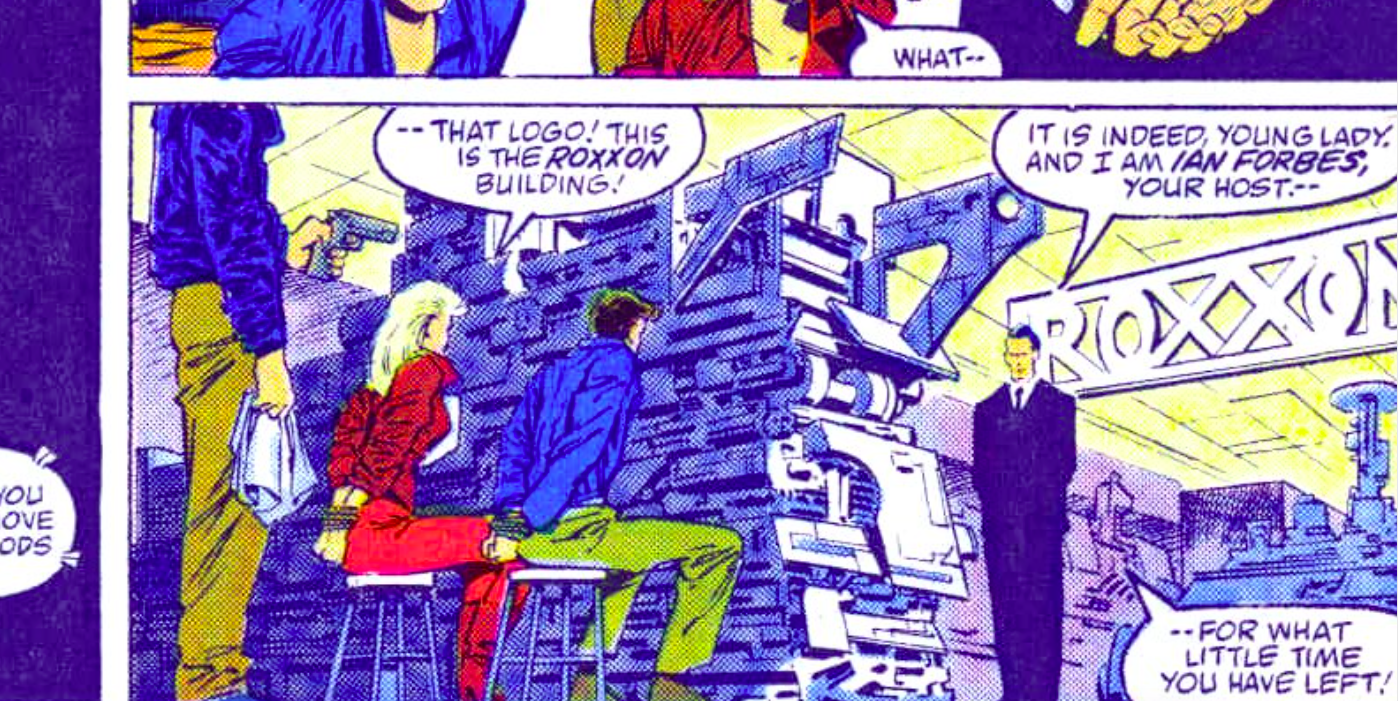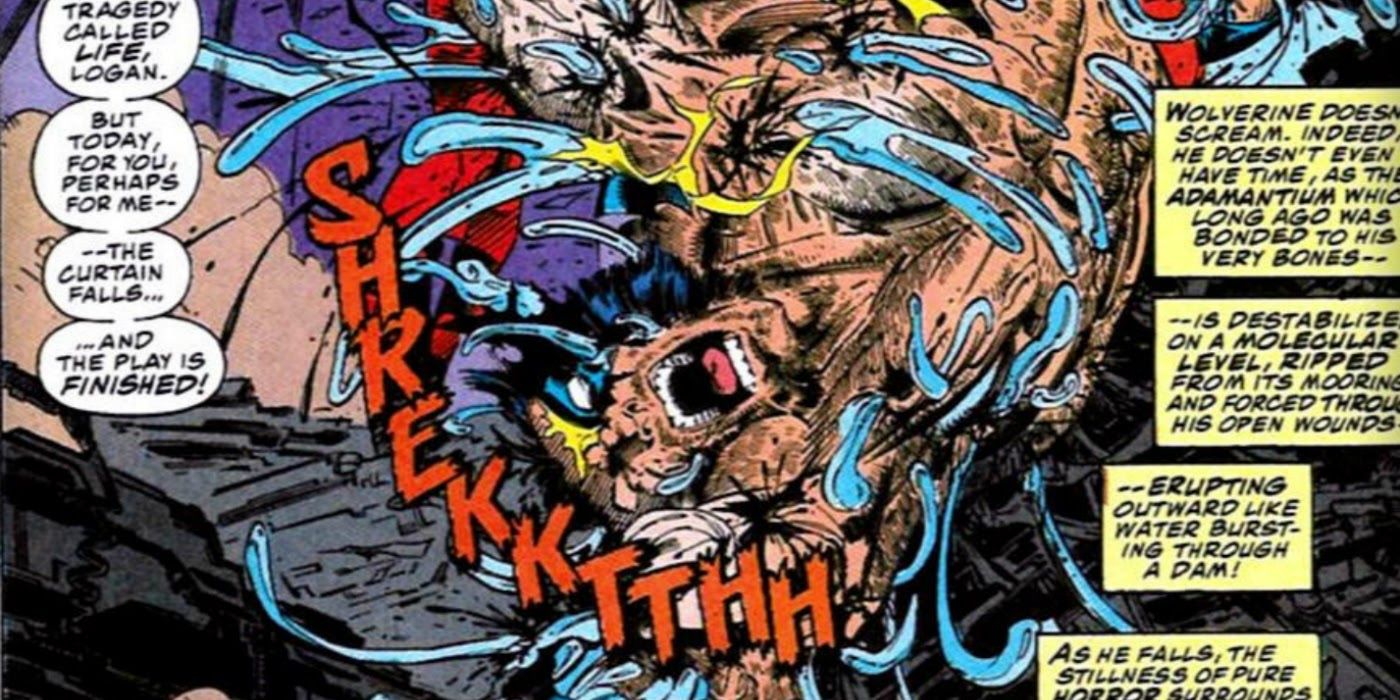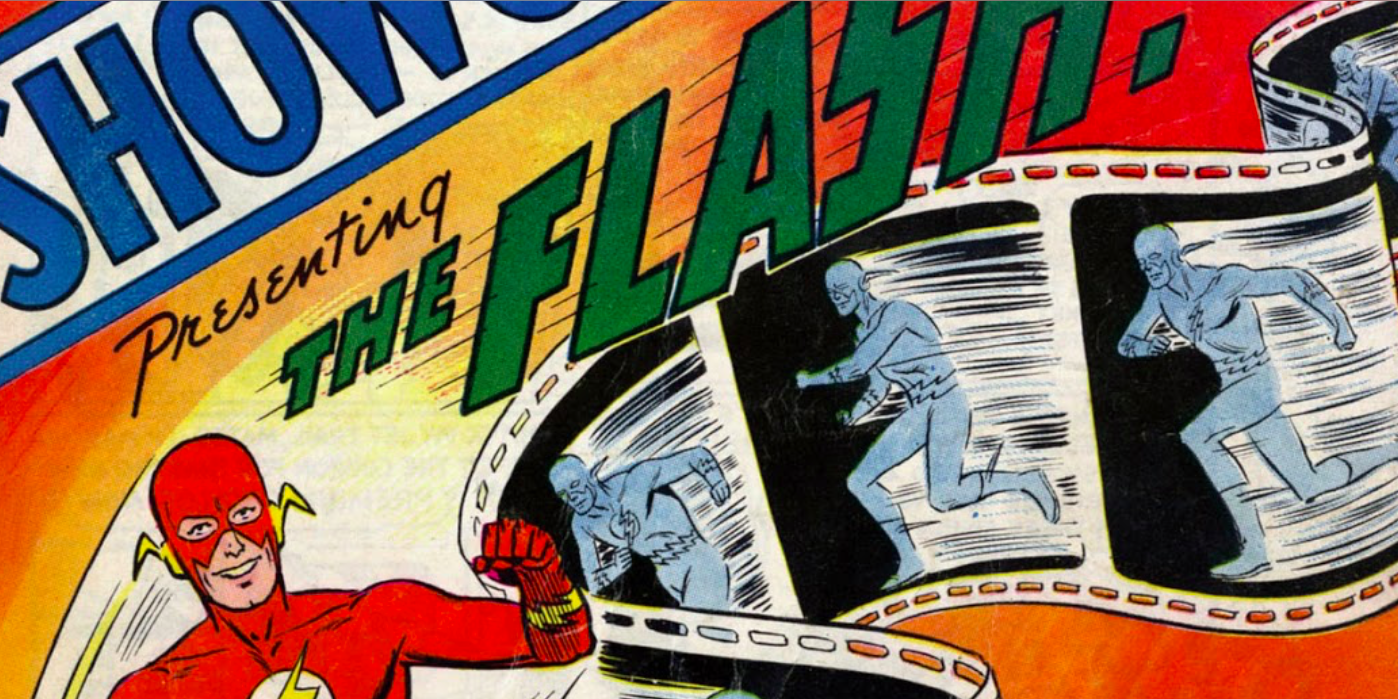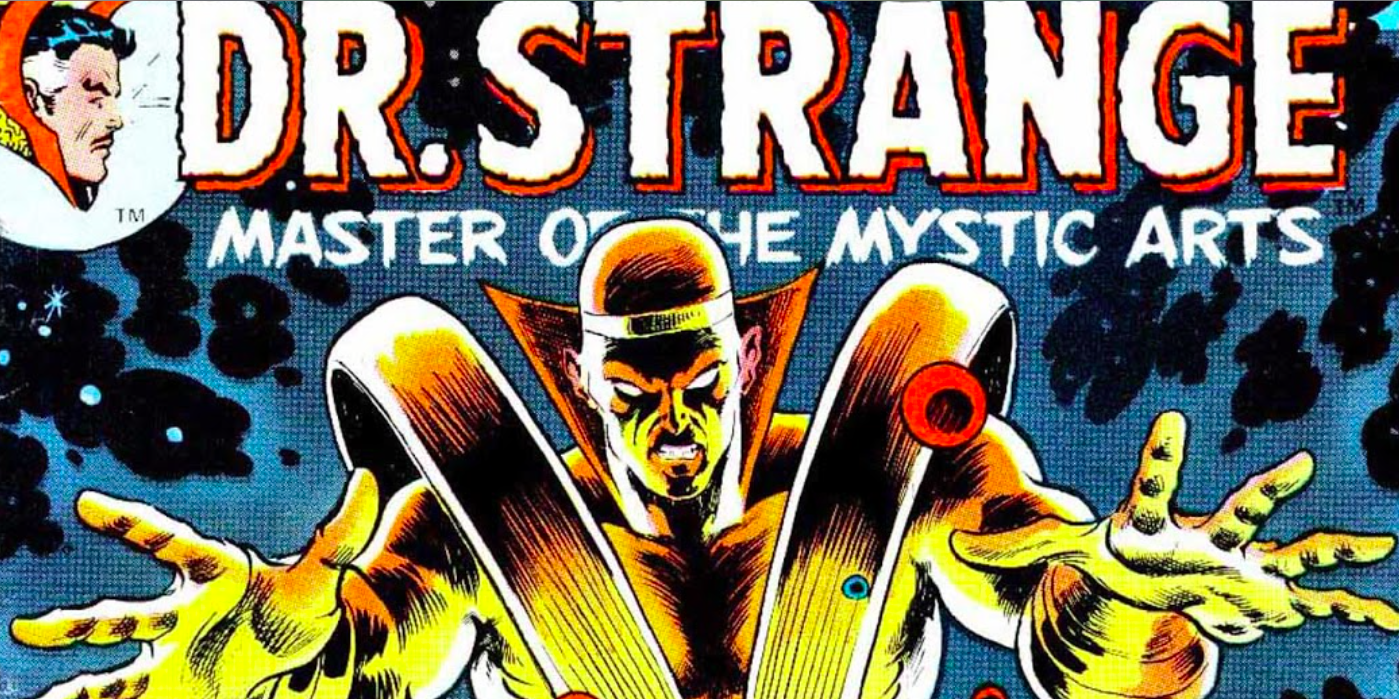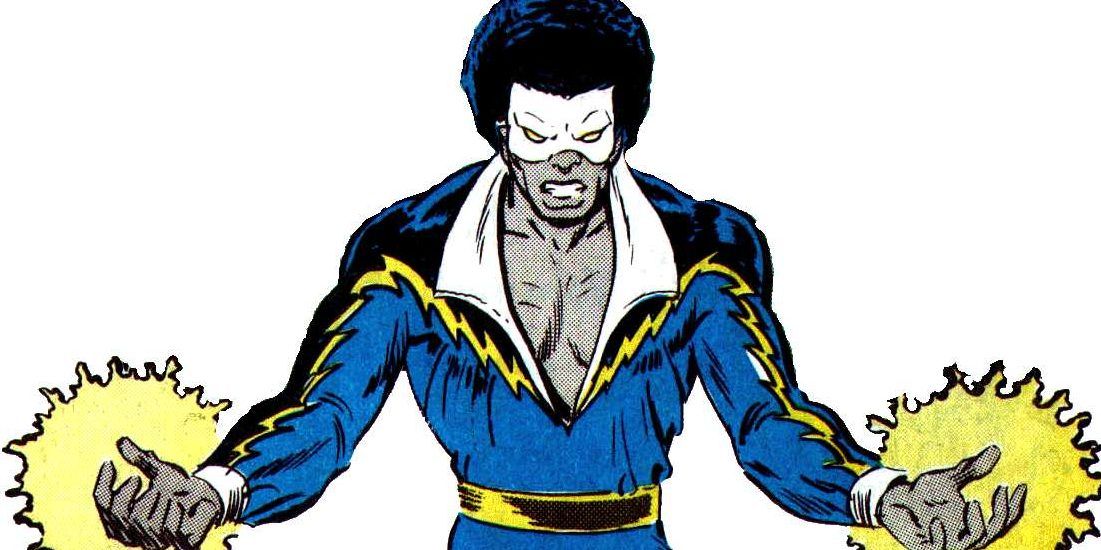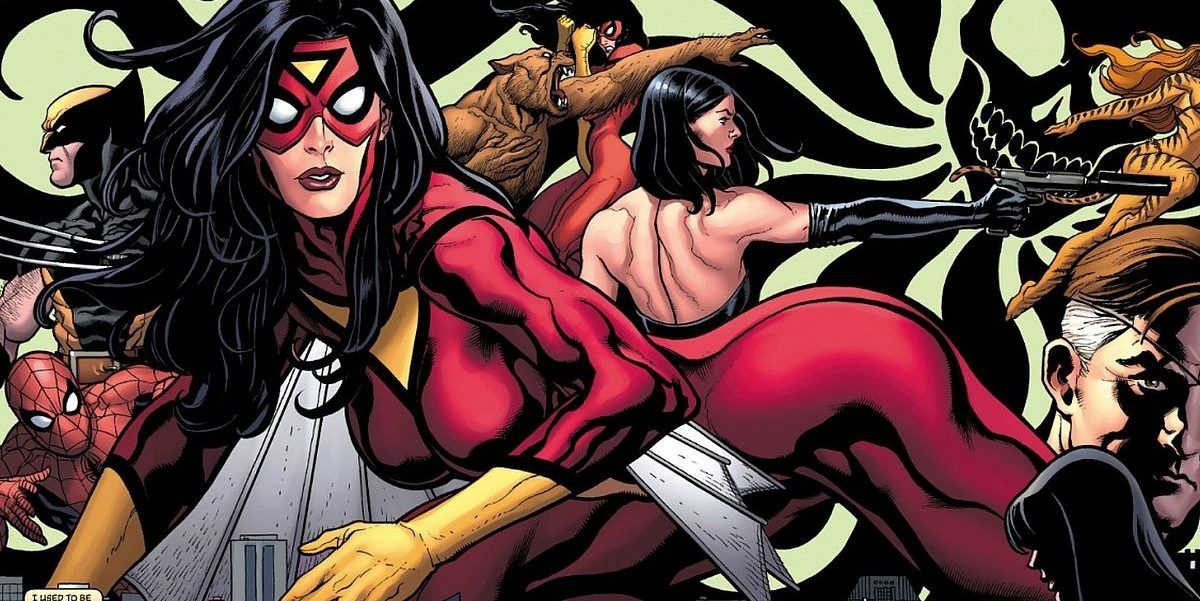We all love reading comic books and enjoying the stories we see in print, but sometimes the stories going on behind the scenes are even more fascinating. The comic book industry is known for its fair share of behind the scenes drama, but not all of it is heavily publicized. In fact, some of the most well known comics have some pretty dark secrets. Whether it led to the creation of a story or it was a company-wide controversy, there is no shortage of crazy and shocking anecdotes from the offices of Marvel and DC, and even smaller independent publishers.
RELATED: 15 Marvel Stories Stan Lee Wishes You Would Forget
Urban legends about the industry have always spread very swiftly, but sometimes they get embellished or completely made up. Whether it's the Comics Code Authority refusing to approve a Captain America comic because of its depiction of suicide or Jerry Siegel threatening to kill himself because of poor treatment and his writing partner, chances are that one of these false legends has reached your ears. On the other hand, some of the most outlandish urban legends are also entirely true, no matter how dark and creepy they can get. Corporate influence, death and body parts, or even flat-out bigotry, these dark stories behind comic books are all true... and super weird.
15 MARK GRUENWALD'S ASHES
Legendary Marvel writer and editor Mark Gruenwald is the center of one the most well-known legends involving the behind-the-scenes world of comic books. It was stated in his will that Gruenwald’s ashes were to be used as part of a comic book, and while his wife initially took it as a joke, after his unexpected death, she followed through on her husband’s wish.
Known mostly for his 10-year stint writing Captain America from 1985-1995, Gruenwald was most proud of Squadron Supreme, a 12-issue limited series he wrote from 1985 to 1986. When it was printed as a trade paperback collecting all 12 issues shortly following his death, Gruenwald was cremated and his ashes were mixed with the ink used to print the book.
14 X-MEN: GOLD ARTWORK
Following 2016’s Inhumans vs X-Men event, Marvel rebooted its mutant franchise with two teams; X-Men Gold and X-Men Blue. Fans were anxious to read the new X-Men stories and follow their favorite characters in two new teams. Unfortunately, shortly after X-Men: Gold #1’s release, there was a huge controversy surrounding its artwork.
The artist, Ardian Syaf, drew hidden messages in the comic pertaining to his homeland of Indonesia’s politics, that were seen as being anti-Semitic and anti-Christian. Syaf drew references to a protest against the country’s Christian president that seemingly proved he was in support of the sentiment that the country should not elect any non-Muslim political leaders. Syaf also drew prominent Jewish character Kitty Pryde in a compromising panel that was perceived to be anti-Semitic. Syaf was swiftly fired from Marvel and his contract was terminated, with the artwork being changed for future releases.
13 DEATH OF SUPERMAN WAS WRITTEN TO ACCOMMODATE A TV SHOW
One of the most infamous comic book stories of all time is the 1990s The Death of Superman arc. The story polarized fans and critics and had a huge impact on Superman’s comics, but it was not originally planned by the DC writers. While it seemed like a major publicity stunt at the time, DC had to come up with something to appease Warner Bros. executives as they planned a new TV show based on Lois Lane and Clark Kent’s romance Lois and Clark.
The showrunners decided that a wedding would take place in the show, but when they found out that the comics were about to run their own wedding story arc, the comic book publisher was forced to push this arc until after the show’s wedding had aired. This left a lot of empty space to fill, which was ultimately filled by the controversial arc.
12 GRANT MORRISON'S "FEEL GOOD" SIGIL
Legendary DC writer Grant Morrison has been involved in his fair share of interesting moments. Perhaps his magnum opus is The Invisibles, the 1990s series from DC’s Vertigo imprint. The Invisibles was partially influenced by Morrison’s fascination and practicing of magic and the occult arts in real life. There were even elements of the story that he claims were based on his experience with alien abduction in Kathmandu.
While the series was initially a success, sales eventually dropped and frightened Morrison into thinking that his series would be cancelled. In an effort to increase sales, Morrison delved into the mystical arts and his belief in sigils, leading to what he called a “wankathon” where he called upon his fans to masturbate at a set time and focus on a specific symbol known as a sigil. Surprisingly (though perhaps not to Morrison), sales increased following the “wankathon” and The Invisibles was not cancelled.
11 THE BAND KISS MIXED THEIR BLOOD WITH INK
Comic books don’t always focus just on superheroes; sometimes they use real world celebrities to tell fictional stories. Such was the case in 1977 when Marvel published a comic about the rock band Kiss. The band had appeared earlier in the year in several issues of Howard the Duck before getting their own special issue. They were known for their stunts on stage, including fire-breathing, heavy use of pyrotechnics and even spitting blood. Kiss brought this unique persona into the ink of their comic as well.
Each of the four members donated a vial of their own blood to the red ink used to print the comic. The band flew to Marvel’s printing plant and were supervised by a notary who confirmed that it was their actual blood that had been drawn and poured into the red ink.
10 SUPERMAN WAS ACCUSED OF BEING A SPY
The drop of the atomic bomb at the end of World War II had a massive impact on American culture, and comic books were no exception. As the paranoia surrounding nuclear war hit an all-time high in the late 1940s, through to the 1950s, many comic stories included the bomb as part of their narratives. Superman’s representation of the American way was no stranger to the real world themes going on in America, and the nuclear bomb found its way into his books.
As more stories were published involving the atomic bomb, people began to fear that DC was spilling government secrets using their Superman comics as the resource to do so. The FBI even investigated Superman co-creator Jerry Siegel, even though he was no longer writing. As it turns out, Superman was never a spy, but he sure did cause a bit of an uproar for being suspicious.
9 SPIDER-MAN AND THE BOMB THREAT
In the mid-1980s the web-slinger received a new ongoing series called Web of Spider-Man, which included a story arc about the political trouble going on in Northern Ireland. The original issue of the story arc framed the Irish Republican Army as villains, which naturally upset many people who shared their ideology. The next issue was a filler issue unrelated to the story, before it was picked up two issues later where it turns out that the evil Roxxon Corporation was behind the villainy the whole time.
The reason for the filler issue and the awkward twist of Roxxon being involved was that Marvel had received a bomb threat due to this Spider-Man story arc. The entire office building that houses Marvel was evacuated and no bombs were found, but the false threat was enough to have the story rewritten.
8 WOLVERINE LOST HIS ADAMANTIUM BECAUSE OF A JOKE
Wolverine is nearly indestructible thanks to his incredible healing factor and the adamantium that coats his bones. Of course, adamantium is metal and the X-Men’s biggest foe is Magneto, who can control metal. As the X-Men gained such extreme popularity, they became something of their own mini company inside Marvel. There were many writers that would routinely come together to discuss where to take the mutants, and in 1993 one writer’s joke turned into reality.
In a shocking twist, Magneto used his powers to remove Wolverine’s adamantium skeleton, which was new territory for the mutant. Wolverine didn’t get his adamantium skeleton back for years, but writer Peter David has admitted that he simply said that Magneto should remove Wolverine’s adamantium as a joke. As we now know, the rest of the writers didn’t take it as a gag and it became a monumental moment for X-Men history.
7 BOB KANIGHER
When it comes to DC writers, Robert Kanigher will always be one of the top names. After decades writing for the publisher and creating some of its most iconic characters, Kanigher has become one of the most respected men in comic book history.
Kanigher was also allegedly difficult to work with and had his fair share of behind-the-scenes drama in his time at DC. One of the most infamous stories about Kanigher is when he berated John Romita Sr. Romita admitted to Kanigher that he sometimes moved around his speech bubbles, which Kanigher hadn’t even noticed, to which the writer did not react so kindly. There is also the infamous hour long shouting match between Kanigher and Steve Ditko, as well as the time Kanigher found himself being dangled out of a window by his ankles after getting angry at an artist.
6 STEVE ENGLEHART WROTE A FAKE FAN LETTER TO HIS OWN BOOK
Steve Englehart and Frank Brunner once concocted a story where Doctor Strange meets God and follows him through creation. The pair didn’t think much of it but apparently Stan Lee wasn’t too thrilled by the idea of Marvel depicting God in its comics. He told the two that they would have to clarify in a letter issue that this character was not the God but rather a god. Englehart and Brunner felt that this would make their story meaningless so they devised their own plan.
Englehart was in Texas and mailed a fan letter from a fictional reverend praising the book. Rather than make the clarification that Stan Lee wanted, the letter was printed since it showed support from a religious leader. It wasn’t until years later that Brunner revealed the truth.
5 ARANIM COMICS WERE STARTED BECAUSE OF A HATE CRIME
It is no secret that representation is a major issue in comic books. While things are getting better, they are far from perfect, which has resulted in its fair share of controversial moments for the comic industry. One man, Suleiman Bakhit, is trying to combat this issue by depicting Arab and Muslim characters as superheroes rather than terrorists. Bakhit has said that he wants to provide role models for Arab and Muslim children, an excellent and admirable cause. Sadly, though, Bakhit’s comics have a dark history.
Bakhit was a victim of a hate crime due to his Arab background. He was beaten by four men and was slashed across his face with a razor, leaving him with a large scar. It is a sad and dark story, but thankfully it has resulted in Aranim comics and their noble cause.
4 DONALD DUCK BLOCKED A DUTCH PATENT
In 1964, Danish inventor Karl Krøyer came up with a method to raise sunken ships, filling them with buoyant items until the ships rise to the surface. Krøyer’s method was even used on a capsized ship in Kuwait to get it out of the water before it contaminated the city’s water supply. It was such a success that Krøyer filed for a patent on his invention, but it was blocked by the Dutch patent office because of a 1949 Donald Duck comic.
In the comic, Donald and his nephews raise a sunken yacht by feeding ping pong balls (buoyant items) through a tube into the sunken ship until it raises, just like Krøyer did in Kuwait. The patent was blocked on account of prior art.
3 BLACK LIGHTNING WAS ORIGINALLY RACIST
DC’s first African-American superhero to headline his own book, Black Lightning, was the result of a very questionable concept. Originally he was meant to be Black Bomber, a racist white man who, after exposure to a chemical in the Vietnam War, would turn black when he was under stress. The African-American alter ego was also supposed to wear a basketball uniform, and the men of each race would have no idea of the existence of the other.
Thankfully, this awful idea never came to be after DC gave the character to Tony Isabella, known for his work writing Luke Cage. Isabella reworked the character and removed it from its insensitive background. He transformed the racist Black Bomber into the progressive Black Lightning, and saved DC from years of embarrassment.
2 NEIL GAIMAN WAS BORN INTO SCIENTOLOGY
Neil Gaiman is one of the most prolific writers in comic book history. Having written many successful comic series, in addition to many successful novels, Gaiman has truly made a name for himself among modern American authors. A recurring theme in his work is religion. Gaiman has a very laissez-faire attitude when it comes to religion in his writing; he explores many different aspects and cultures.
As it turns out, Gaiman's carefree attitude when it comes to religion stems from his upbringing in the Church of Scientology. Yes, Neil Gaiman was born to a father who was a member of the religion that has allegedly influenced much of Hollywood, and made a name for itself in recent years. Gaiman was raised both Jewish and Scientologist, so his writings involving religion are rooted in this unique background.
1 SPIDER-WOMAN CREATED TO SAVE MARVEL A TRADEMARK
In 1977, Marvel introduced the female version of Spider-Man. Spidey was already one of the most popular and iconic comic book characters of all time and it was only natural that he received a female counterpart. Surprisingly, Marvel was not initially planning on creating Spider-Woman, but when rumors surfaced of another company, Filmation, planning on creating their own Spider-Woman for a cartoon, Marvel created her first.
It is no secret that Marvel was always very protective of their property and was always interested in having rightful ownership to their properties, so the fact that it created Spider-Woman and secured her trademark less than a year later just to prevent someone else from doing so fits right into their MO. Spider-Woman has gone on to become one of the most popular female characters in comics, but her creation simply stemmed from Marvel protecting their own property.
Do you know any other juicy gossip from behind the scenes of the comics game? Let us know in the comments!

